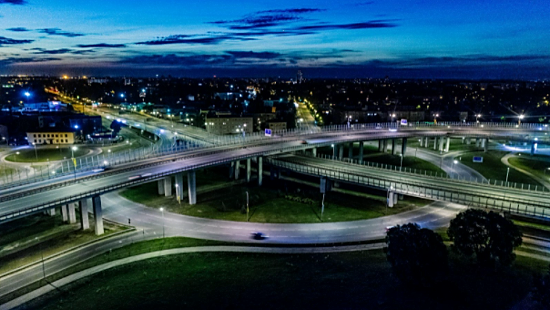Jori Hamilton, a regular contributor to 21st Century Tech Blog, is writing today about innovation in transportation that is leading us to a more environmentally sustainable future. The transportation sector is a significant contributor to global warming. Other than the energy industry, buildings we work in, and homes we live in, it is the largest source of greenhouse gas emissions. As such transportation needs positive disruption if we are to collectively achieve net-zero emissions by 2050. Jori writes about how the adoption of artificial intelligence (AI), advanced information systems (IS) and the application of machine learning, a form of AI, are bringing about the disruption we need for a more sustainable future. As always your comments are welcomed.
Technological innovation is instrumental in the planet’s move to a sustainable future. Nowhere is that more true than in the transportation sector. From railroads, to air, to vehicle ground transportation, new technology is enabling our mobility.
Tools like AI, information systems (IS), and machine learning are making this possible. How?
AI is Automating Efficiency
Imagine a train capable of operating on its own, avoiding collisions, and tracking passenger capacity all using onboard systems. This is exactly where trains are evolving in the 21st century. This form of ground transportation, almost two centuries old, is just one segment of the sector where AI is being deployed.
Its also turning up in all kinds of vehicles, including electric and hybrid cars and trucks. Since commercial vehicles account for a large portion of the sector, the increasing prevalence of AI systems in vehicles is set to make the world a cleaner and safer place. That’s because onboard AI:
- Eliminates the risk of human error
- Provides more efficient routing
- And improves operational efficiency while driving.
Human error is a contributing factor in more than 90% of all traffic accidents. Any safety improvement, that takes human operations out of the equation, is seen as a plus. AI can analyze the driving environment, and assess dangers with a precision that a human driver cannot match.
Smart features are making for more fuel-efficient vehicles. Onboard applications track ideal GPS routes. They inform drivers about preventive maintenance when needed. They improve the efficiency of the vehicle during operations. All these make for greater sustainability just when most vehicle manufacturers in the world are transitioning their models to electric, hybrid, and hydrogen fuel cell models.
IS is Enabling Transparency
IS provides the foundation for how we collect and manage data. Without IS transportation and supply chain managers would be at a loss to track and maintain large vehicle fleets. That’s why transportation is a huge IS growth sector with global aviation alone expected to employ up to 99.1 million people over the next 20 years. The majority of these jobs involve overseeing information to optimize efficiency and achieve sustainability.
Since the air travel industry accounts for 860 million metric tons of carbon dioxide atmospheric pollution annually, the ability to reduce fuel usage and to optimize flights are a must for global sustainability. IS, AI and smart dashboards are making the transition possible.
Transparency means preventive maintenance, optimized routes, and lower emissions through the introduction of new technologies for air travel. Short-haul electric, fuel cell, hybrid, and hydrogen are all in the mix of technologies and innovation for air travel and transportation within the next decade.
Machine Learning is Optimizing Energy Use
Machine learning is a form of AI. It does exactly what the name implies. A machine learns based on the data models it is fed. Then, it learns through pattern recognition and begins to form intelligent conclusions. Over time machine learning improves its programming on its own. In manufacturing, machine learning is used to streamline efficiency and reduce waste. In transportation, it brings similar benefits.
With machine learning, full automation of vehicles is becoming a near reality. In other industry sectors, it is helping to power smart cities and curtail urban air pollution. One machine learning IBM project, Green Horizon, uses machine learning to track and predict pollution in urban environments.
A Final Note
All of the above technologies are game-changers for transportation. They will allow us to raise operational emissions standards in trucks and automobiles. And with the cost of renewable energy declining by 85% over the last decade, the ability for transportation to source its energy requirements for electric vehicles, and for green hydrogen to be used in fuel cells will become increasingly more affordable. That’s how technology will move the transportation sector towards a sustainable future. In an industry that is all about getting to destinations, you don’t want to be left behind.
















